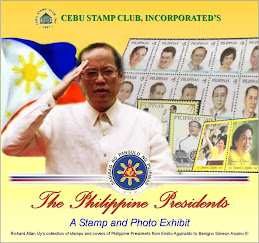Today in Philippine History (Philatelic Edition Series 3):
September 17, 1937
On September 17, 1937, Filipino women finally gained universal suffrage after President Manuel L. Quezon signed it into law.
In 1933, Governor-General Frank B. Murphy affixed his signature approving the Woman’s Suffrage Bill. The bill stipulated that a plebiscite be held which required 300,000 women to vote yes for their right of suffrage.
Prominent women leaders such as Natividad Almeda Lopez, Pilar Hidalgo Lim, Geronima Pecson, Josefa Jara Martinez, Josefa Llanes Escoda, Rosa Sevilla de Alvero, Concepcion Felix de Calderon, Constancia Poblete, Pura Villanueva Kalaw and Paz Mendoza Guazon, among others, lobbied for women to be able to vote.
On April 30, 1937, around 447,725 women affirmed their aspiration to vote, surpassing the 300,000 requirement. Only 33,307 were not in favor.
For many years, Filipino men held on to the tradition that a woman's place was at home doing the house chores, cooking, cleaning and taking care of the children. They were opposed to the idea that women should be allowed to vote and run for public office.
KkMany lawmakers tried to come out with bills allowing women to vote but to no avail. Cebu Congressman Filemon Sotto filed the first women's suffrage bill at the Philippine Assembly in 1907 but was shot down. From there, many bills were sponsored including those by Assemblyman Melecio Severino of Negros Occidental in 1912, Cebu's Mariano Cuenco in 1916, and Tomas Luna in 1918.
President Manuel L. Quezon made it known that he was a supporter of women's right to suffrage in his speech at Malacanang Palace on September 30, 1936.
(Design, concept, stamps and research: Richard Allan B. Uy) All rights reserved
Photo credit: wikipedia.org




















No comments:
Post a Comment